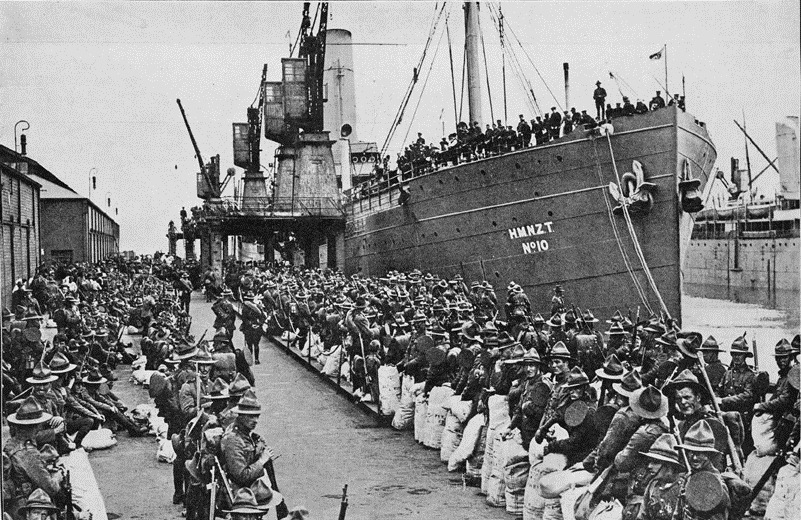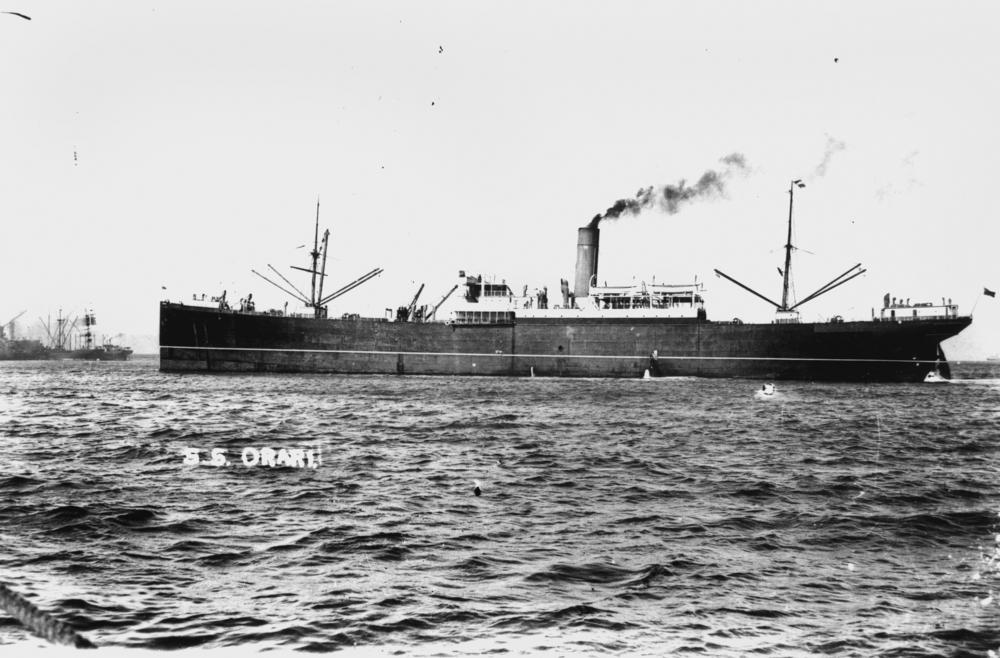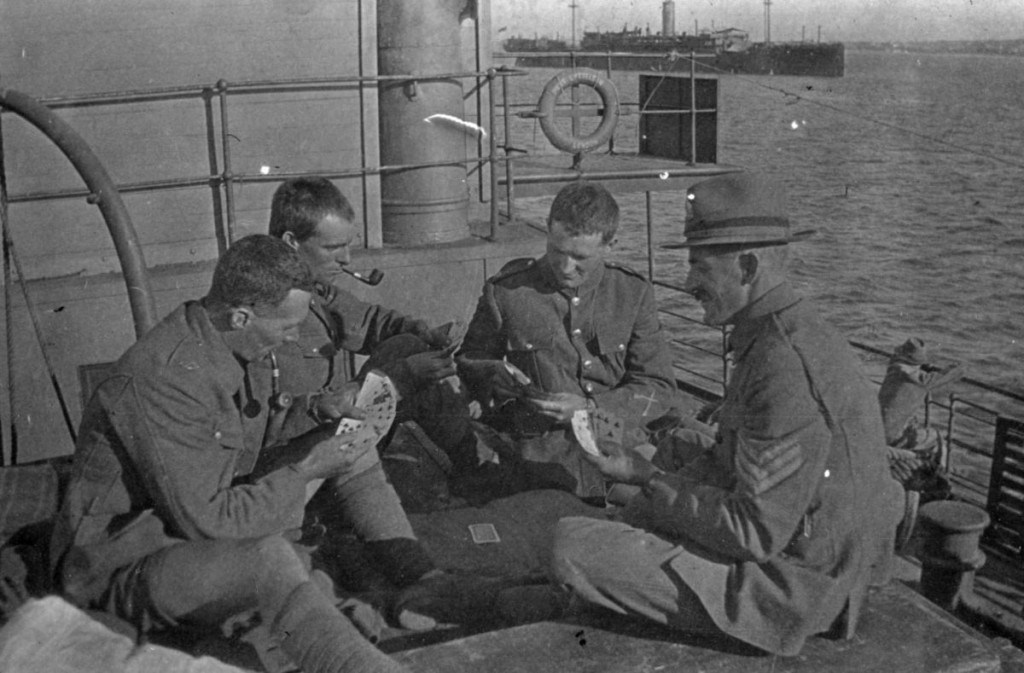Voyaging to war in 1914

Arawa in Wellington. Wellington Infantry Battalion men of the Main Body wait to board their home for six weeks.
The 10- ship convoy transporting the Main Body of the New Zealand Expeditionary Force to Egypt carried 8500 men and almost 4000 horses to Egypt. Although the number of Wairarapa men is unknown it is likely to be at least several hundred.
Those who enlisted in the Wairarapa went to Awapuni Racecourse in Palmerston North from 13 August 1914. Most were infantry or mounted rifles, along with a scattering of gunners, medics and engineers already serving in the Territorial Army.
Lieutenant-Colonel William Malone commanded the Wellington Infantry Battalion, which included the Ruahine Company (southern Hawke’s Bay and Wairarapa). Carterton’s Major Herbert Hart was his second-in-command. The Wellingtons were distinctive with their lemon-squeezer felt hats, initially suggested by Hart and strenuously encouraged by the forceful Malone.
In late September, ships leased as troop-transports began bringing men from the South Island to Wellington. Ten ships had been hastily fitted out to carry soldiers and horses, the largest being the Athenic, a passenger liner of 12,000 tons.
The Wellington area men went by train to the capital on 23 September and boarded their allocated ships. However the convoy sailing was delayed because of the danger of German cruisers at large in the Pacific.
The New Zealand Government was concerned about the escort for the 10-ship convoy to Australia, two old Royal Navy cruisers. Two troopships which sailed from Auckland were recalled to their home port while the troops in Wellington slept on board or at temporary camps around the capital.
The Royal Navy sent a powerful armoured cruiser, Minotaur. The other heavy unit of the escort was the Japanese battle cruiser Ibuki. These two were more than a match for the largest German cruisers, Scharnhorst and Gneisenau.
With the arrival of the Auckland ships, the convoy finally sailed from Wellington on 16 October 1914. After a short stop in Hobart the New Zealand convoy met 28 ships carrying the Australian Imperial Force (AIF) at Albany and the huge convoy, with 20,000 men and 7500 horses, began its traverse of the Indian Ocean on 29 October.
The New Zealand (His Majesty’s New Zealand Transport) ships were:
Maunganui HMNZT3 566 men 204 horses
Tahiti HMNZT4 641 men 282 horses
Ruapheu HMNZT5 816 men 244 horses
Orari HMNZT6 285 men 728 horses
Limerick HMNZT7 516 men 348 horses
Star of India HMNZT8 682 men 395 horses
Hawkes Bay HMNZT9 970 men 569 horses
Arawa HMNZT10 1318 men 215 horses
Athenic HMNZT11 1314 men 339 horses
Waimana HMNZT12 1461 men 496 horses

Wairarapa Archive. Melve King collection Orari at sea. This ship was specially fitted out for horses – 728 carried – along with Wairarapa men of the Wellington Mounted Rifles.
Most of the Wairarapa infantry travelled in the Arawa while those of the Wellington East Coast Mounted Rifles Squadron were in Orari which also carried the largest number of horses.
While in the Tasman Sea on 18th October, Herbert Hart wrote in his diary ‘Sea moderating. Sickness moderating. One officer went jokingly around the men enrolling men for the Navy after the completion of the war but met with little success. We are receiving war news by wireless; all lights are screened at night.’
The most dramatic incident of the voyage was the encounter in the Indian Ocean between escort HMS Sydney and the German raider Emden at Cocos Island which ended when the outgunned German cruiser was driven ashore, a total loss.
Several soldiers died during the voyage, one after an accident during festivities to celebrate crossing the Equator (Neptune’s Day). The convoy coaled at Colombo, Celyon, then sailed through the Suez Canal to reach Alexandia on 3 December. This ended the journey by sea of the largest single group to leave New Zealand.

A game of cards helps pass the time on a troopship voyage. Wairarapa Archive. Melve King collection